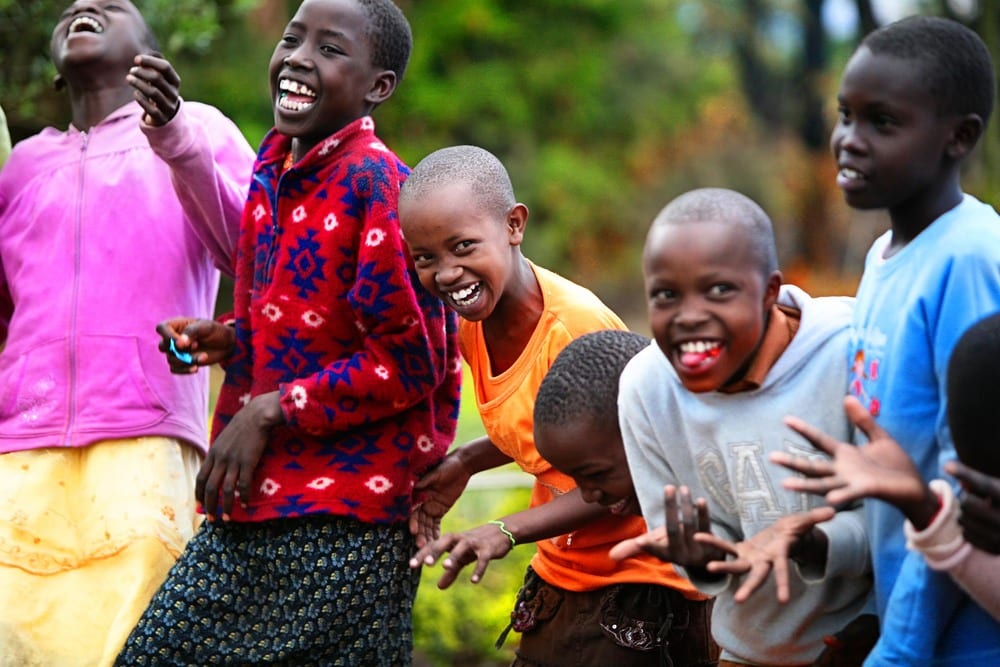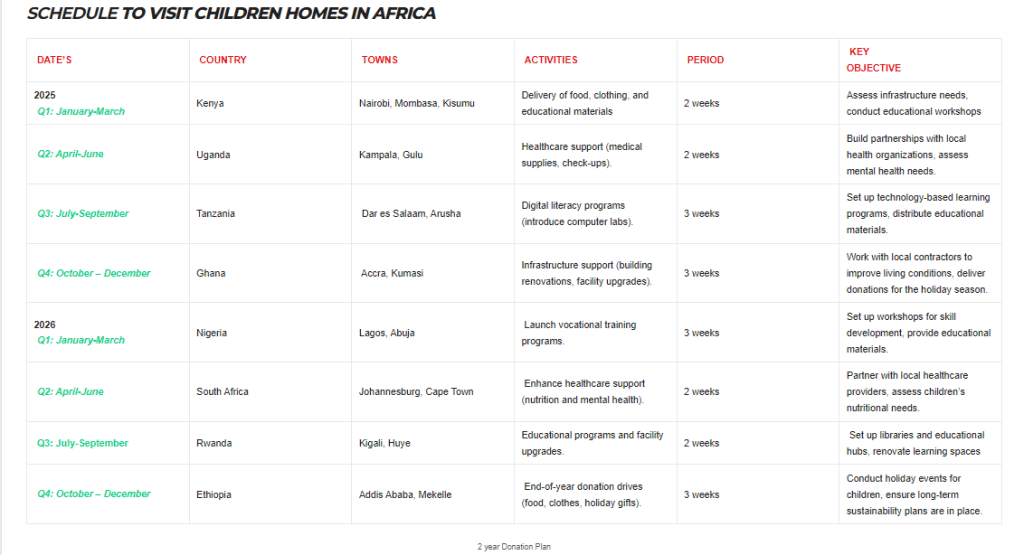Here’s a suggested 2-year visitation schedule for TechGuruInfo’s donation programs to children’s homes in Africa. This schedule aims to cover multiple regions, with quarterly visits to evaluate needs, deliver donations, and build partnerships.
FOR A CLEAR VIEW ON MOBILE, PLEASE ROTATE YOUR DEVICE.
| DATE’S | COUNTRY | TOWNS | ACTIVITIES | PERIOD | KEY OBJECTIVE |
| 2025 Q1: January-March | Kenya | Nairobi, Mombasa, Kisumu | Delivery of food, clothing, and educational materials | 2 weeks | Assess infrastructure needs, conduct educational workshops |
| Q2: April-June | Uganda | Kampala, Gulu | Healthcare support (medical supplies, check-ups). | 2 weeks | Build partnerships with local health organizations, assess mental health needs. |
| Q3: July-September | Tanzania | Dar es Salaam, Arusha | Digital literacy programs (introduce computer labs). | 3 weeks | Set up technology-based learning programs, distribute educational materials. |
| Q4: October – December | Ghana | Accra, Kumasi | Infrastructure support (building renovations, facility upgrades). | 3 weeks | Work with local contractors to improve living conditions, deliver donations for the holiday season. |
| 2026 Q1: January-March | Nigeria | Lagos, Abuja | Launch vocational training programs. | 3 weeks | Set up workshops for skill development, provide educational materials. |
| Q2: April-June | South Africa | Johannesburg, Cape Town | Enhance healthcare support (nutrition and mental health). | 2 weeks | Partner with local healthcare providers, assess children’s nutritional needs. |
| Q3: July-September | Rwanda | Kigali, Huye | Educational programs and facility upgrades. | 2 weeks | Set up libraries and educational hubs, renovate learning spaces |
| Q4: October – December | Ethiopia | Addis Ababa, Mekelle | End-of-year donation drives (food, clothes, holiday gifts). | 3 weeks | Conduct holiday events for children, ensure long-term sustainability plans are in place. |
SCHEDULE TO VISIT CHILDREN HOMES IN AFRICA
Follow-Up Visits: Each visit will include follow-up assessments from previous quarters to measure impact.
Partnership Building: Each trip should aim to solidify partnerships with local NGOs, healthcare providers, and governments to ensure long-term support.
Volunteer Involvement: Engage volunteers from local communities and international supporters during the visits.
Documentation: Each visit should be documented with reports and impact assessments to share with donors and stakeholders.
This schedule ensures consistent engagement with children’s homes and allows for strategic planning and resource allocation over the next two years.


